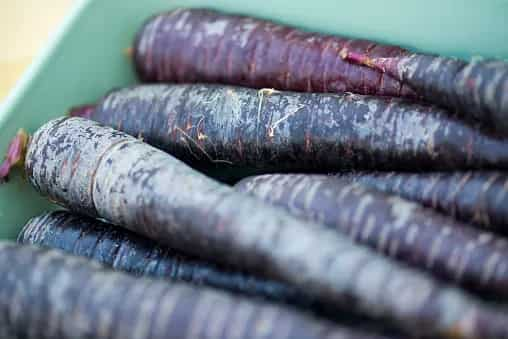With the onset of Winter season, people start craving “Gajar ka Halwa”. Of course, who doesn’t like it but one more thing that North Indians especially the Punjabis look forward to is a glass of bright red-coloured liquid with a spicy and pungent flavour. The drink made up of black carrots and beetroot, often labelled as a miracle drink, is “Kanji”. Kanji is a drink that the people in Punjab, Uttar Pradesh and Rajasthan are quite familiar with. They remember the drink not only for its unique flavour but also for its health benefits. Kanji is a prebiotic drink and has been a vital part of the diet for years. It has been in existence long before Kombucha took over Instagram and the food world.
If some Historians are to be believed, Kanji dates back to the records of the Indus Valley. Kanji is traditionally made from black carrots which are hard to be found these days. However, as history tells it, the carrots which were black and yellow were cultivated the earliest. But the orange-coloured carrots cultivated in the West gained popularity and replaced all other varieties. Actually, black carrots get their colour from Anthocyanin which is a flavonoid high in antioxidants. But of course, it isn’t just the colour as it is known to have ample health benefits. Moreover, the taste of black carrots is also quite different from the common orange carrot that we see in the market. Kanji is largely made during the winters as black carrots are usually available only during that season. However, one can make Kanji around the year using beetroots and orange carrots instead of black ones.

It is believed by some religious scholars that Rishi Kashyap mentioned this drink in his ayurvedic thesis “Kashyap Samita”. He says that Kanjika is a sour and fermented rice dish but later, “Kanjika” was used to classify all fermented foods. The north Indian Kanji is also believed to have emerged out of that same old tradition. Usually, the memory of Kanji also brings the memories of grandparents. If I talk about my memory of Kanji, I straight get to my grandmother handing me a glass of it in winters. At that time, I believed that it was quite sharp and pungent but as I grew older, I found myself looking forward to Winters and the Kaanji because of its comfort and familiarity.
Another reason behind having Kanji is that as soon as Winters arrive, elders often suggest eating and drinking immunity boosters because the chances of falling ill are higher at that time. Kanji here comes as a saviour. This is one drink that helps in the overall wellness of the body. Since it is made up of black carrots, beetroot, mustard seeds, black pepper and water, it acts as an immunity booster and acts as a shield from seasonal diseases. It is a probiotic drink that ferments the bacteria in the air and the yeast present in the vegetable skin, making it very good for the gut. Besides, it helps in toning the blood, cleansing the liver and balancing digestion.
Now, there isn’t a standard recipe to make Kanji. There is nothing that specifies volume and indication to mark when fermentation is done. But you can consider it done when it tastes sharp and its colour turns darker. Kanji is something salty and sour and is definitely not everybody’s cup of tea. Especially during summer days as people are tempted to have something sweet and chilled. But Kanji serves as a natural cooler and is so beneficial that people should at least try to develop a taste for it. Often, the last batch of Kanji is consumed during Holi along with Thandai and this marks the end of winter. Make Kanji with these steps:
Ingredients
- 2 kg black carrots
- 1 kg beetroot
- 4 tbsp mustard seeds
- 3 tbsp black salt
- 2 tsp red chili powder (could be used as per the taste buds)
- 2 tbsp roasted cumin powder
- 8-10 cups of water
Method
- First, wash and clean the black carrots and beetroot. Then, cut the black carrots into long strips with peels on (as done traditionally). Cut the beetroots into small to medium pieces.
- Grind mustard seeds and cumin seeds. Set aside.
- Put the carrots and beetroots in a large mixing bowl. Add salt, mustard, cumin seeds, chili powder, and a pinch of black salt and mix well.
- Now add water and stir the mixture well.
- Transfer the liquid into ceramic jars also known as Martabaans. Avoid using steel or plastic since there will be a process of fermentation.
- Cover the ceramic jar with a muslin cloth and tighten the rim in order to seal the jar.
- Place the Kaanji-filled jar in the sun for about 3 to 4 days so it can ferment well. Remember bringing it inside the home each night and getting it back under the sun every morning after stirring it well.
- Give it love and patience just like you do it with pickle.
- When after 12-15 days, the taste seems sharper and the colour seems darker, Kaanji is ready to be served.
- Make sure you keep it in the refrigerator so that it can last for months.
Pro tip: Don’t throw away those carrots and beetroots used in the Kanji. They add a great flavour to salads, sandwiches, wraps and even Chapatis. It is all about taste actually!! You can use it in the way you want. Let your imagination be the way.


